Motion detector lights are convenient, easy to use, and cost effective. Millions of people use them inside and outside of their homes. They are a simple technology that we take for granted and often don’t know much about. Have you ever had any questions about motion detector lights?
In this article, we will ask and answer 10 questions about motion detector lights so that you can better understand this piece of home security.
1. How do Motion Detector Lights Work?
If you’ve read our page about motion activated cameras, then you are familiar with some of the different types of motion activated technology. This means you already know how motion detector lights work, because the different technologies that power motion activated cameras are the exact same technologies that power motion detector lights.
Whatever the type of sensor, motion detector lights use specialized technology to detect movement and turn on the lights. Here’s a basic rundown of how each type of motion detection works in the context of motion detection lights.
Heat Detection Sensors
Some motion detection technology utilizes sensors to detect heat differences. If the sensor detects a sudden change in temperature, like, say, a body, crossing in front of it, the lights will flip on. This type of motion sensor would be best utilized for an indoor motion detector light instead of an outdoor one.

Signal Blockage Sensors
Another type of motion detection technology detects blocked signals. Whenever something crosses in front of the sensor, it physically blocks the signal that the sensor is emitting, letting the lights know that there is movement and that it is time for them to turn on. This type of sensor is great for both indoor and outdoor motion detector lights.
Light Change Sensors
Light change detectors track ambient light and turn on your lights whenever they detect a big enough change in lighting. This type of motion detector light is usually used outdoors and is most often set to activate only when it is dark outside, like a front porch light.
Contact Sensors
Based off of their name alone, it is pretty easy to figure out how contact sensors work. Usually placed on doors or windows, contact sensors activate when the direct signal from one part of the sensor to the other is interrupted. This happens when the door or window they are fastened to is opened.
2. What Activates Motion Detector Lights?
The question of what sets off motion detector lights can be answered very straightforwardly: anything that moves can set them off. That is, after all, the purpose of having a motion detector light.
Indoor motion detection lights can be activated by your family walking into a room or by your curtains fluttering in the wind. If your motion detector lights are activated by heat, your air conditioning and heating unit could even turn your lights on. This would happen if your sensor is placed too close to a vent, and you can prevent this from happening by making sure you keep any sensors that are activated by temperature changes at least 15 feet away from vents.
Outdoor motion detection lights can be activated by passing cars, approaching visitors, or even rustling leaves in nearby trees. Sometimes bugs or spiders that crawl across your lights’ sensors can even trigger your lights to turn on.
Nobody wants their lights turning on every time the wind blows, so adjusting the sensitivity of your sensors can help you get your lights to turn on only when you want them. We’ll talk more about how to adjust the sensitivity of your sensors in question 10.
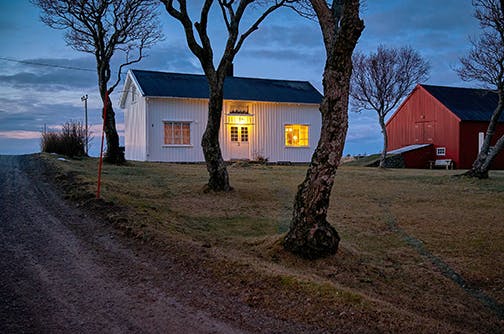
3. Where Should I Put My Motion Detector Sensors and Lights?
The placement of the sensors for your motion detector lights requires a little bit of careful consideration. Whether you’re placing lights inside or outside of your home, you want them to turn on at the right time. This means you need your sensors to see what you want them to see when you want them to see it.
Strategic placement will help your motion detector lights work for you.
Sensor Height
The higher you place your sensors, the larger their field of view will be. For this reason, you want to place motion detector light sensors above head height.
The best height to place a motion detector light sensor is 6–10 feet above the ground. This gives your sensor a wider view of activity within its field of view without setting its vision too high. A sensor placed too close to the ground would only pick up on the movement of people or animal’s feet, and a sensor placed too high up would potentially miss a lot of regular, everyday movement.
The optimal location for a sensor is high enough that it will catch movement up above around the height of your head but not so high that it will miss movement closer to the ground. That sweet spot is found between 6 and 10 feet. When in doubt, however, it is always best to follow the manufacturer’s guidelines. You can find their recommended sensor height on your sensor’s packaging or by taking a quick look at the product pages on their websites.
Sensor Location
The placement of your sensors will depend on your objective. The two main objectives for using motion detector lights are (1) convenience and (2) security.
If you are placing a light for convenience inside of your house, for example, you typically will only want that light to activate whenever you enter the room where it is placed. This means putting your sensor somewhere where it can see the mouth of the door but not into the hallway. If the sensor did have a view of the hallway, it would turn on your lights whenever someone so much as walked by.
You want your sensor to have a broader field of view when you are placing it for security purposes. This means placing it on corners where it can have a broad view of its surrounding area and placing it higher up on the wall for more visibility.
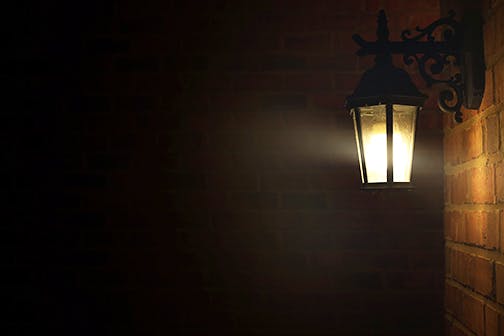
Inside Lights
Motion detector lights placed inside of your house increase convenience and decrease your electric bill. If you can’t get your sensors in the right place, though, motion detector lights are less effective than manual switch lights.
Consider placing motion detection sensors for your lights in the hallways outside of bedrooms. It is smart to place them inside of each room that is frequently used, including bedrooms, kitchens, living rooms, and laundry rooms. You’ll also want a sensor in your home’s entryway so that your lights will turn on every time you come inside. This is especially helpful if your hands are full when you enter the house, like when you’ve just done a big grocery haul.
Place each sensor where it can have an unobstructed view of the entire room, and if you have a heat sensor, make sure you keep it away from any vents. This will minimize false alarms.
For increased security, consider placing sensors around valuables that you have inside of your home. This could frighten thieves who approach those objects and are met with the lights suddenly turning on. It could also alert you to a thief’s presence inside of your home.
Avoid placing sensors where they have a good view of any windows. Windows cause problems for motion sensors because the sensor can pick up on motion that is happening outside of the house and mistakenly turn on the lights. Windows can also cause heat sensors to misfire when direct sunlight comes through the window and hits the sensor.
Outside Lights
People usually want their outdoor motion detector lights to turn on when they approach their home. To accomplish this, you will want to place sensors so that they cover your walkway, driveway, front porch, and garage door. For the backyard, you’ll want to place sensors where they have a view of your back door, patio, and stairways. If you have any areas that could be dangerous in the dark like a swimming pool or a hot tub, take special care to place sensors around those areas.
Most outdoor motion detector light sensors are designed to see anywhere from 50–80 feet. If you are placing outdoor sensors for security purposes, take extra care to ensure that your sensors are covering areas of your property where an intruder would likely walk, like a footpath.
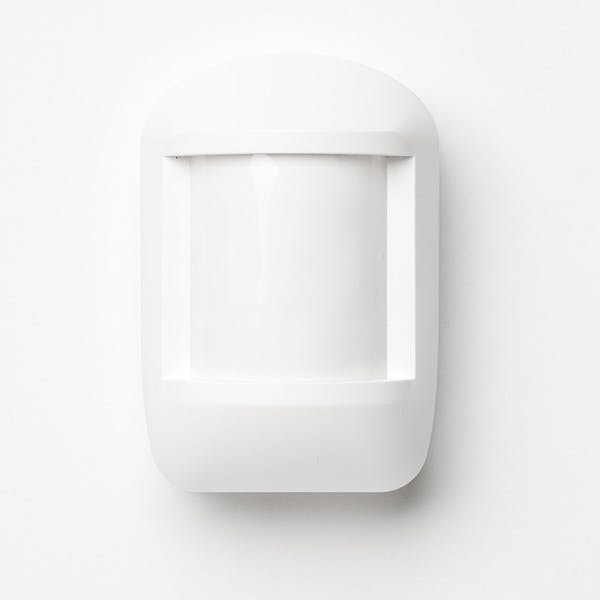
4. Do My Motion Detector Lights Need a Switch to Work?
Seeing as motion detector lights were created to turn on without you having to flip a switch, you do not have to have a switch to have motion detector lights. Having a switch that attaches to your lights, however, expands your lights’ capabilities.
Indoor and outdoor motion sensor lights that have a manual switch let you turn them on and off manually, which can be really convenient for checking if a light bulb has burned out. Sometimes a motion sensor light will appear to have burned out when in reality its sensor is just blocked. Having a manual switch lets you check if the light can be turned on and off manually, which will let you know if your light actually needs to be replaced.
5. Can I Set My Motion Detector Lights to Stay Off for a Time?
Getting your motion detector lights to turn off and stay off is another available function if you have a switch attached to your light. Whether you don’t want your porch light turning on after you’ve gone to bed or you want to pretend like nobody is home, it is possible to override your motion sensor and make it so your lights turn off.
You’ll want to check with the manufacturer of your motion detector light to confirm how to override the motion sensor function of your lights if you want them to stay off for a time. For most lights, it will be as simple as flipping the lightswitch to the off position.
6. Is It a Good Idea to Set My Motion Detector Lights to Stay On or Off?
A common home security practice involves leaving porch lights on throughout the night to prevent burglary. The idea behind it is that burglars will deduce someone is home and pass on to the next house. But does this practice actually do anything to deter crime? Is it a good idea to override the timing sensor of your light and keep it on? And is it ever a good idea to override your motion sensor and make sure your lights stay off?
Lights on to Deter Burglars
The first thing to know when making a decision about keeping your motion detector lights on is that manually setting porch and indoor lights to remain on has not been shown to reduce crime or deter burglars. Most people who are planning a break-in do their research and plan out what they are going to do before they commit the crime. This can involve staking out a house and taking note of the daily schedules of the people who live there. Most robberies take place during either the workday or when families are on vacation because the robbers have done their research and know that nobody will be home.
Because burglars prefer to come prepared when they plan on robbing a house, leaving your porch or home lights on won’t do a lot to deter burglars since they will likely already know whether or not you and your family are home.
An alternate idea to leaving your lights on to deter burglars is utilizing timers. Consider setting the lights inside your home to turn on in different rooms throughout the day to mimic movement. You could also put your porch light on a timer so that it turns on in the evening but then turns off when it is bedtime. This will make your empty home appear more natural and lived-in.
There are some situations where it is smart to override the settings of your lights, so let’s take a look at what those are.
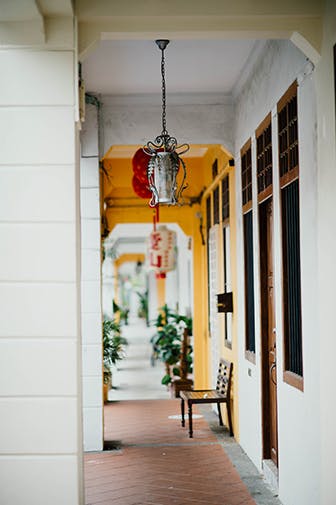
When to Keep Your Porch Light On.
If you are home in the evening, it is a good idea to have your porch light on. This clearly indicates your presence inside of your home and invites visitors. It is also wise to set your porch light to stay on if you are expecting someone to come to your home late in the evening. Whether you have a visitor coming in from out of town or a child who has a later curfew, keeping the porch light on until they are inside the house will make their walk inside safer and easier.
Many people opt to not override their motion detector lights’ timer function when they have people coming to their home late at night because the motion detector function will illuminate the person’s path as soon as they approach anyway. While it does feel more welcoming to have a light turned on in anticipation of someone’s arrival, it is more energy efficient to let a light turn on only when it is needed.
When to Turn Your Porch Light Off.
Turn your porch light off when you are going to bed at night. Since leaving your port light on throughout the night does not deter burglars, it is both eco-friendly and money smart to turn your porch light off when you go to bed.
You should also turn your porch light off when you are planning on being away from your house for a few days. It is uncommon for anyone to leave their porch light on during the day, so it is a big red flag if yours remains on for days at a time. Leaving your porch light on while you are gone just so it will look like someone is home at night will alert burglars to your absence.
7. How Can Motion Detector Lights Help My Home Security?
If a lit porch light doesn’t do much to deter burglars, how are motion detector lights any different? How do they help home security?
A well-lit house is an easy and cheap way to deter unwanted intruders. Lights draw attention, and the last thing a burglar wants is someone knowing that they are there. Since motion detector lights turn on whenever they sense movement, an intruder who triggers your lights will be put in the spotlight and easily seen.
Another way your motion detector lights can help your home security is by working in conjunction with a security camera. Setting up a camera to start recording whenever your motion detector lights are triggered lets you capture footage of potential hazards on your property while promoting energy efficiency since your camera and lights will remain dormant until they are triggered.
Motion detector lights can also help you stay safe as you walk at night. If you are coming home late or are expecting visitors, having automatic lights will light your walkways and make your journey safer.

8. How Long do Motion Detector Lights Stay On?
Every motion detector light is a little bit different, and each model will be programmed to stay on for a different amount of time. On average, a motion detector light will stay on for up to 20 minutes. That amount of time is extended each time a sensor detects fresh movement, so it is possible for a motion detector light to stay on for much longer than 20 minutes at a time.
When you install motion detector lights, you have the ability to choose how long each light will stay on. Customizing the amount of time each light stays on is a smart move because it can potentially lower your power bill. If you have a motion detector light in a storage room, for example, you might want it to only stay on for five minutes. Most people go into a storage room, find what they are looking for, and then leave immediately after. If this is true for you, it doesn’t make sense to have a light that is programmed to stay on for 20 or more minutes while you’re not using it.
On the other hand, you might want a motion detector light that you’ve placed in your living room to stay on for longer than 20 minutes. A light that will stay on for a longer amount of time makes sense in high-traffic areas, especially if you are planning on participating in a stationary activity like reading a book.
It is equally energy efficient to customize the amount of time your outdoor motion detector lights stay on. It makes more sense for motion detector lights to stay on for a long time when they are placed on a back patio where you might have social gatherings than it does for a light in front of your garage where people don’t usually gather to stay on for a long time.
9. Does Weather Affect Motion Detector Lights?
The simple answer to this question is that weather does not do a lot to affect motion detector lights. Some sensors are more sensitive in colder temperatures, but it is more likely that storms will interfere with your lights than anything else. Strong winds or falling rain might move plants and porch decorations around, setting off your lights. The chances of this happening is relatively rare, and you can always adjust the sensitivity of your motion sensor so that it doesn’t go off for movements small enough to be caused by inclement weather.
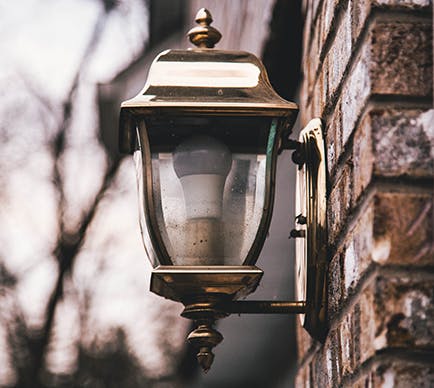
10. How Can I Troubleshoot My Motion Detector Lights?
Since motion detector lights are designed to turn on whenever they sense any movement, they can be set off really easily. This means that you might get a handful of false alarms, like if a bug flies across your outdoor motion sensor and turns on your lights.
If you live alone or in an area where you are nervous about your safety, false alarms can be nerve-wracking. These false alarms are actually one reason why some people stray away from using motion detector lights. The good news, however, is that you can solve the problem of unwanted false alarms by adjusting the settings in your motion detector lights.
The first thing you’ll want to do if your motion detector lights are turning on too frequently or staying on for too long is a simple troubleshoot. Simply take your motion detector sensor and check its surrounding area. Make sure that nothing has fallen in front of your sensor that could be causing it to frequently turn on or stay on. A spider that built a web in front of your sensor, for example, could turn your light on every time it crawled past the sensor.
If you cannot see anything in front of your sensor, try temporarily moving it to a new location. If your lights continue to misbehave while the sensor is in a new location, you can know that the problem was not the sensor’s environment, but that there is something wrong with the actual equipment. And if the lights work normally when the sensor has been moved, then you’ll know you need to investigate a little bit more. Check to see if your heating or air conditioning vents could be blowing on your sensor or on the nearby curtains, alerting your sensors to movement.
If your lights are still turning on too frequently or staying on after moving things around, it is time to restart your motion detector lights. Make sure that your lights and your light switches are set on auto, not manual.
The next step is to adjust your light’s settings. Your lights and sensors can be customized so that they only turn on when things move at a certain distance from the sensor. They can also be customized to only turn on when large enough objects cross in front of their path. Say you have a dog that is constantly setting off your motion detector lights. You can adjust your light’s settings so that they don’t turn on unless something that is more than 100 pounds passes in front of your sensor.
If none of the above works to get your lights behaving as they should, it might be time to replace your sensors. Try contacting the company where you bought your lights to see if they offer a warranty or if they have any suggestions for fixing your lights before going out and making a purchase.
